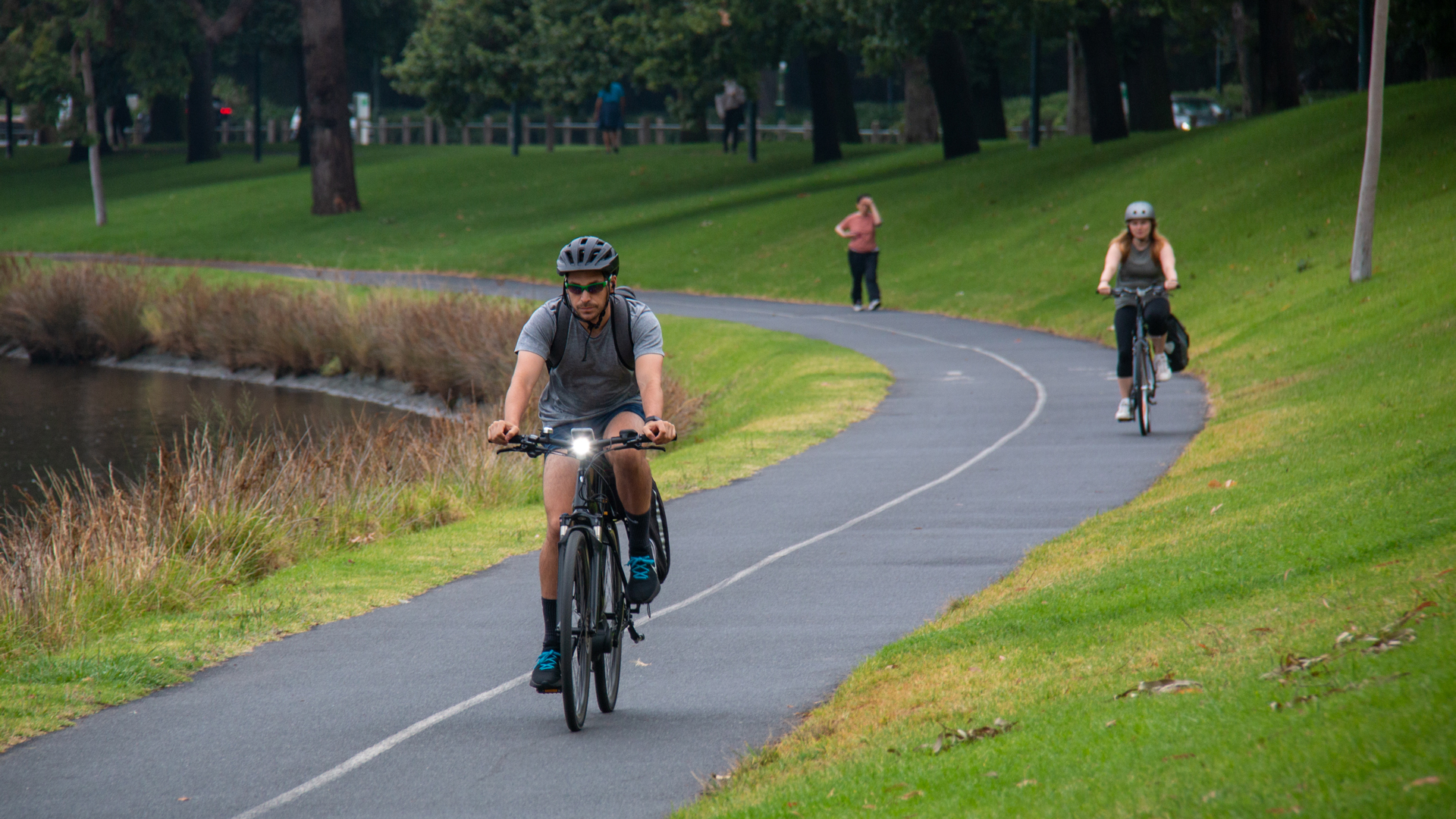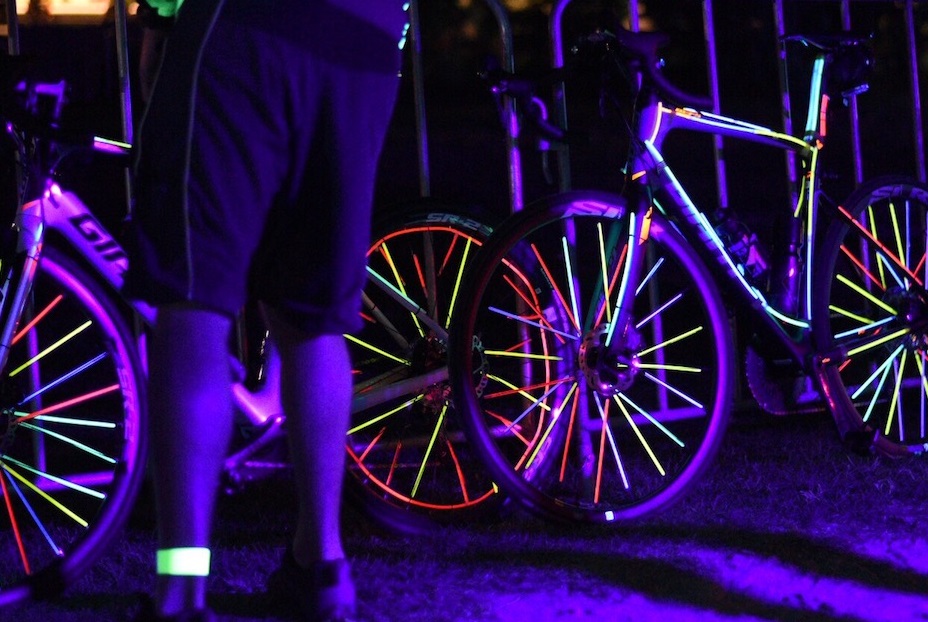Tips & resources
Light up and be seen
All riders must legally carry and use front and rear lights when riding in dark conditions or at night so they can safely be seen by other road users. Victorian road rules require riders to use a front white light and rear red light, which are visible from at least 200 metres away, and a rear red reflector that is visible from at least 50 metres away.
A simple on-off flashing sequence makes your lights noticeable to other road users and helps them understand there is someone riding a bike up ahead.
Where to locate them
The best spots to attach your lights are your handlebars and seat post. This sets the lights at a height that is most visible to other road users.
Lights attached to bags or clothing often end up facing the wrong direction, while lights on helmets are less visible to drivers and can also be a menace to other bike riders.
Remember when using lights to see, overly bright lights are a challenge for other path or road users. Be considerate and keep your lights pointed down when other riders or path users are coming your way.
What makes a good light?

When it comes to bike lights, we score them on seven different categories:
-
High visible output (head-on and angled)
-
Excellent water resistance
-
Durability
-
Ease of use
-
Easy to fit to a bike
-
Easy to charge or change batteries
-
Secure attach/detach
Visibility
It's all in the legs

Reflective material
It’s not just lights that can improve your visibility – research shows that reflective full-length leggings and ankle bands can greatly improve visibility.
We’ve long recommended reflective ankle bands as a powerful visibility enhancement at night, and now there is convincing evidence that they are also effective during daylight.
Read moreBecome our friend
Find out more about Bicycle Network and support us in making it easier for people to ride bikes.


